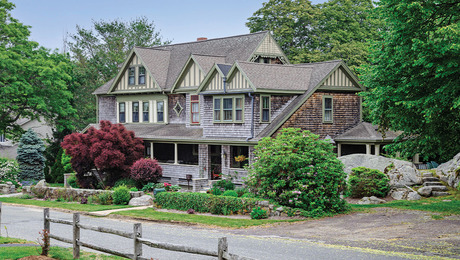Q:
I just bought a house from the 1820s, and I have to repoint the chimney. Which mortar will work with the existing mortar in the chimney?
Dave Ericson, Newtown, CT
A:
Richard T. Kreh, author of Building with Masonry (The Taunton Press, 1998), replies: Finding the right mortar is not so much a case of using an old-fashioned mortar, but rather a softer mortar because most old mortars had little or no portland cement in the mix. Instead, older mortars were composed mostly of hydrated lime and sand.
The most important thing to consider when repointing an old chimney is that you don’t want a mortar that cures a lot harder than the old brick. Mortar types are classified by compressive strength. The more compressive strength a mortar has, the more brittle it becomes; and strong, hard mortars do not stretch or give much. Mortar types T, S and N are all too strong and usually don’t make good repointing mortars.
Type O mortar, or high-lime mortar, a softer mortar with a low compressive strength of 350 psi, is best suited to repointing for several reasons. The first reason is that type O mortar is softer than the older bricks, and it allows the bricks to expand or contract from temperature changes or stress. The bricks can move a little without cracking the mortar joints.
Another good reason for using a low-compressive-strength mortar for repointing is that low-compressive-strength mortars contain less portland cement and more hydrated lime. High-lime mortars are softer but more waterproof. The extra lime also bonds better with the older, softer bricks. Because the main function of repointing mortar is to create a strong bond to the brick, not to support the compressive weight of the brickwork or the masonry, a high-lime mortar is really the best choice in this case.
Yet another reason for using high-lime mortar for repointing is a phenomenon known as autogenous healing, which means that high-lime mortar has the ability to reknit or heal itself over time if hairline cracks occur. When a crack does occur, rainwater and atmospheric carbon dioxide react with the mortar to provide this function. Rainwater dissolves the hydrated lime, and it is then recarbonated by the carbon dioxide, which seals the crack. Finally, of all the materials present in cement-based mortar, lime undergoes the least change in volume. So using a high-lime mortar further reduces the chances for the formation of cracks.
Type O mortar used to be sold by the bag, but because of its limited use, it’s now mainly a recipe mortar. Here’s my formula for a good repointing mortar: 1 part type-1 portland cement, 2 parts mason’s hydrated lime, and 8 or 9 parts washed building sand mixed with enough water to make it workable. The original mortar in your chimney probably has a slight yellow tinge or a buff color typical of older mortars. To match this color to the color of your new mix, add a little buff-shaded masonry cement just to tone it out. All the materials in my recipe, including the buff masonry cement, should be available at most masonry-supply stores.






















